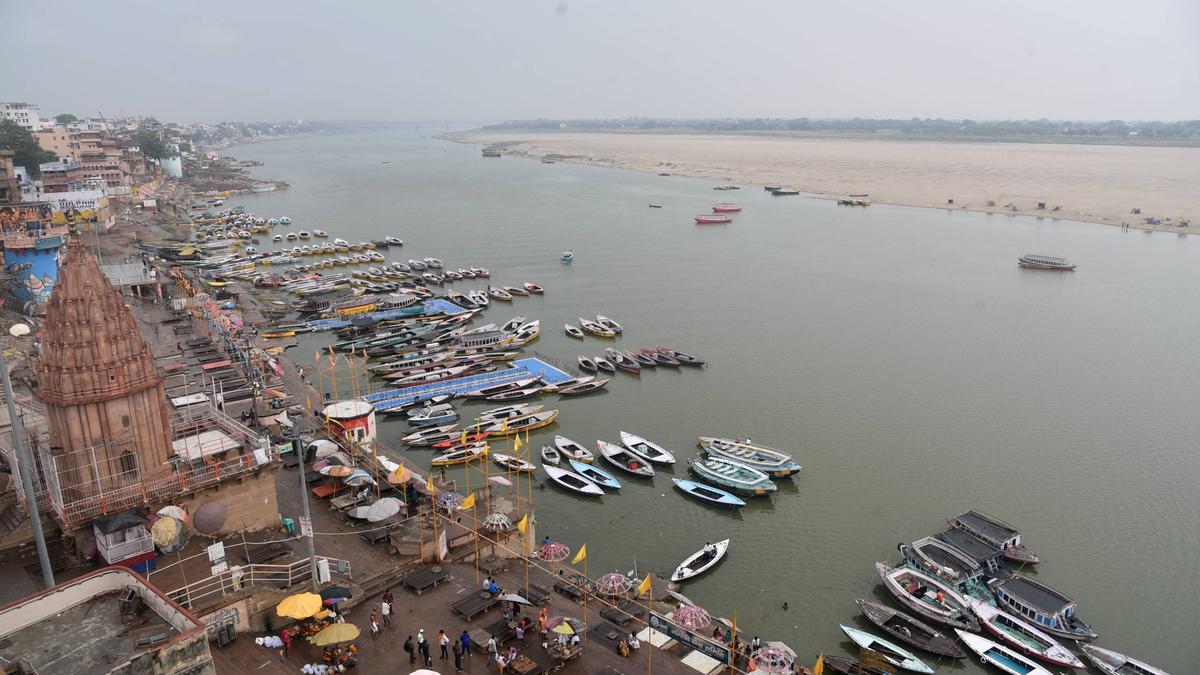Context
-
An ambitious project that aims to improve the health of the Ganga is among 10 “ground-breaking” efforts recognised from around the globe by the United Nations for their role in restoring the natural world.
Key Details
- According to a report unveiled during the U.N. Biodiversity Conference (COP15) in Montreal, climate change, population growth, industrialisation and irrigation have degraded the Ganga along its arcing 2,525-km course from the Himalayas to the Bay of Bengal.
-
Restoring the health of the Ganga is the focus of a major push to cut pollution, rebuild forest cover and bring a wide range of benefits to the 520 million people living around its vast basin.
- The initiatives were declared World Restoration Flagships and are eligible to receive U.N.-backed promotion, advice or funding.
- They were selected under the banner of the United Nations Decade on Ecosystem Restoration, a global movement coordinated by the U.N. Environment Programme (UNEP) and the U.N. Food and Agriculture Organisation (FAO).
- It is designed to prevent and reverse the degradation of natural spaces across the planet.
- Together, the 10 flagships aim to restore more than 68 million hectares an area bigger than Myanmar, France or Somalia and create nearly 15 million jobs.
Government-led Namami Gange initiative
- The government-led Namami Gange initiative is rejuvenating, protecting and conserving the Ganga and its tributaries, reforesting parts of the Ganga basin and promoting sustainable farming, according to the statement.


Photo Credit: PTI - The project also aims to revive key wildlife species, including river dolphins, softshell turtles, otters, and the hilsa shad fish.
- The initiative, with an investment of up to $4.25 billion so far, has the involvement of 230 organisations, with 1,500 km of river restored to date.
- Additionally, there have been 30,000 hectares of afforestation so far, with a 2030 goal of 134,000 hectares, according to the U.N.
Other inaugural World Restoration Flagships
- The other inaugural World Restoration Flagships include the Trinational Atlantic Forest Pact, which aims to protect and restore the forest in Brazil, Paraguay and Argentina, and the Abu Dhabi Marine Restoration project which is safeguarding the world’s second-largest dugong population in Abu Dhabi.
- The Great Green Wall for Restoration and Peace initiative to restore savannas, grasslands and farmlands across Africa, the Multi-Country Mountain Initiative based in Serbia, Kyrgyzstan, Uganda and Rwanda, and the Small Island Developing States Restoration Drive focused on three small island developing states – Vanuatu, St Lucia and Comoros were also recognised.
- The Altyn Dala Conservation Initiative in Kazakhstan to restore the steppe, semi-desert and desert ecosystems, the Central American Dry Corridor, and Shan-Shui Initiative in China were the other projects on the list.
- In revealing the World Restoration Flagships, the U.N. Decade seeks to honour the best examples of large-scale and long-term ecosystem restoration, embodying the 10 Restoration Principles of the U.N. Decade on Ecosystem Restoration.
- The U.N. Decade acknowledges the time needed for restoration efforts to deliver results. Until 2030, regular calls for World Restoration Flagships will be launched.
- In expectation of increased funding to the U.N. Decade’s Multi-Partner Trust Fund (MPTF), additional submissions are being considered, including restoration drives from Pakistan, Peru, and an initiative focusing on Somalia and other drought-affected countries.
About U.N. Biodiversity Conference (COP15)
- Leaders and negotiators from 196 countries, including India are here in Canada for a two-week conference expected to adopt a landmark agreement to halt and reverse nature loss by 2030.
- During the U.N. Biodiversity Conference (COP15) being held from December 7 to 19, about 20,000 delegates from across the world will negotiate an eight-year plan to preserve and restore biodiversity.
- They will do so through the Convention on Biological Diversity, a treaty adopted for the conservation and sustainable use of biological diversity and related issues.
- COP15 aims to achieve a historic agreement to halt and reverse nature loss, on par with the 2015 Paris Climate Agreement.
Source: TH
Visit Abhiyan PEDIA (One of the Most Followed / Recommended) for UPSC Revisions: Click Here
IAS Abhiyan is now on Telegram: Click on the Below link to Join our Channels to stay Updated
IAS Abhiyan Official: Click Here to Join
For UPSC Mains Value Edition (Facts, Quotes, Best Practices, Case Studies): Click Here to Join
